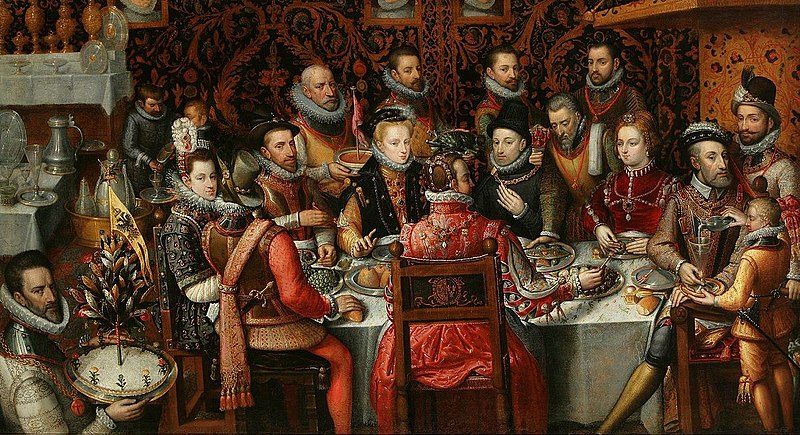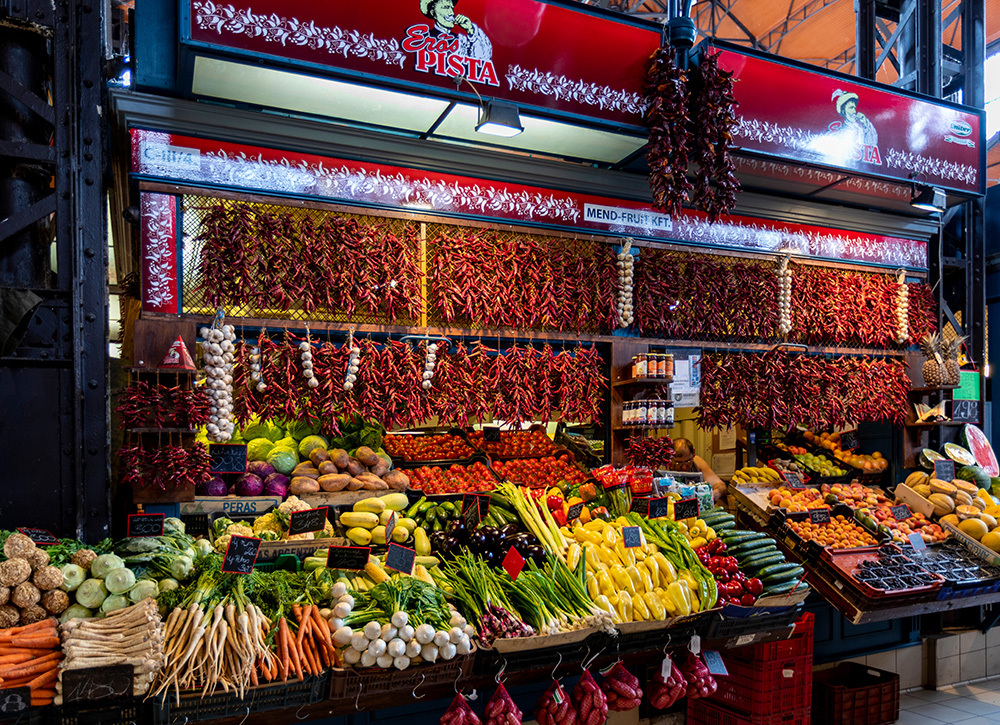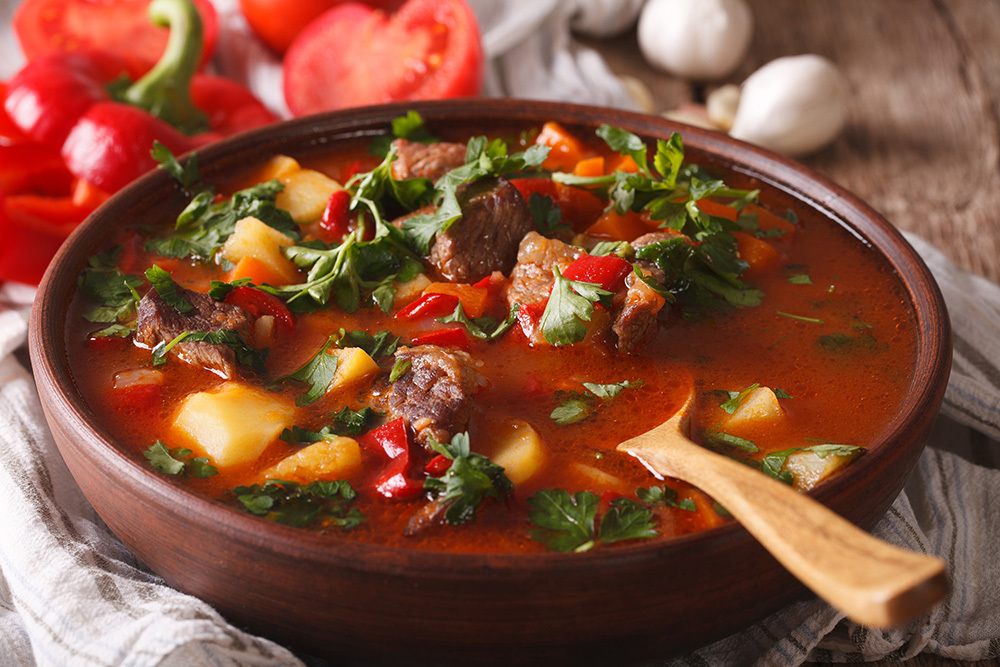At the early years of the Kingdom of Hungary, sheep and poultry were a popular choice but as the wife of King Stephen, the first Hungarian ruler was Gizella, a Bavarian royalty, German cooking and baking began to spread in the country and became the first influence to Hungarian gastronomy.
The second wave of influence reached Hungarian cuisine in the 15th century: during the reign of King Matthias, Beatrix of Italy, his second wife brought chefs and customs to the Hungarian court along with the tradition of chestnut, garlic, mace, saffron, onion, breadcrumbs, pasta, cheese and fruits.

The third and some say, most important influence reached the country with the Turkish occupation during the 16th and 17th century: the signature spice of Hungarian cuisine, paprika was brought to the country and changed our dishes forever. At the same period, stuffed peppers and stuffed cabbage and eggplant – also indispensable components to Hungarian cuisine – were heavily inspired by the Turkish dishes at the time. Last but not least, this was also the influence which introduced a completely new genre of foods to the country: sweets and desserts.

The next historical influence to Hungarian cuisine arrived with the Habsburgs: between the 17th and the 20th centuries, French cuisine elements and practices were incorporated into the local customs through Austrian gastronomy. Soups and appetizers appeared on the menus and meals of multiple courses soon became a custom as well. It is worth mentioning, that this time around Hungarian cuisine influenced Austrian gastronomy as well: goulash became just as an important dish in Austria as Weiner schnitzel in Hungary. These were also the years when the modern Hungarian national identity was born and local cuisine was shaped accordingly: by end of the 18th century, the Hungarian goulash, the chicken paprika, and főzelék – a kind of vegetable dish enriched with flour – and the use of red-hot paprika, in general, became the very symbol of Hungarian political opposition.

WWII and the communist era of Hungary were devastating for Hungarian cuisine: due to widespread shortages and the centralised, planned economy of the country, the importance and relevance of high-standard gastronomy was extensively diminished.
Eventually, following the end of the Soviet rule, the 1990s brought the revival of Hungarian food culture. A new generation of young chefs and restaurants marked the beginning of a bright future in local gastronomy. In 2010, the Costes Restaurant in Budapest was awarded Hungary’s first Michelin star and by 2020, Budapest already has 6 Michelin star restaurants, proving that Hungarian gastronomy has arrived at its well-deserved place among the most iconic cuisines of the world.
Links and Sources: SBS ; Havefun.Travel
Source of the Picture: Wikipedia